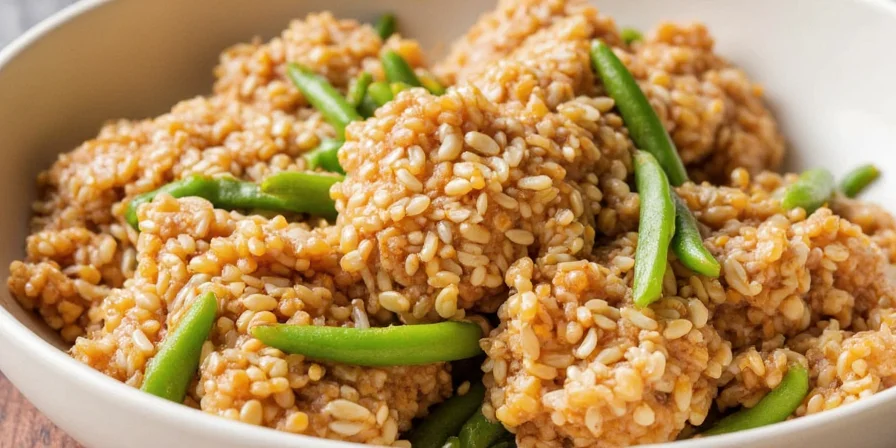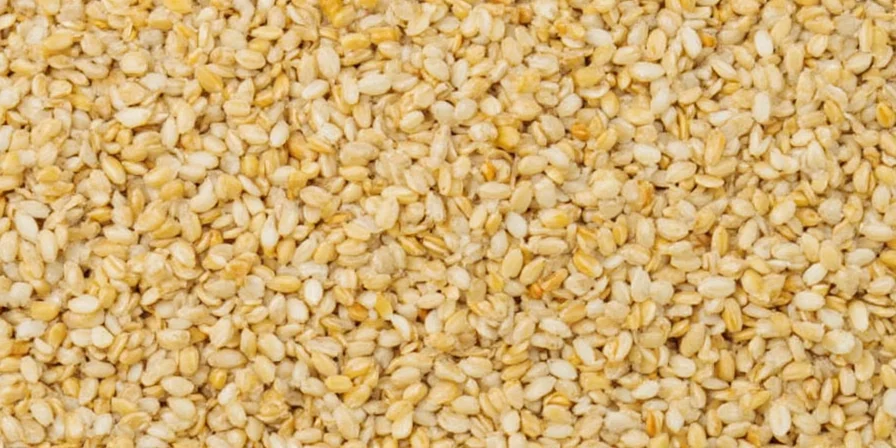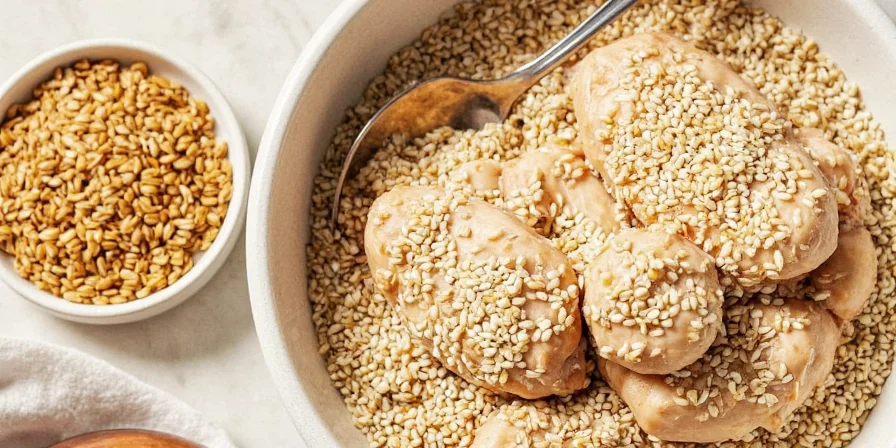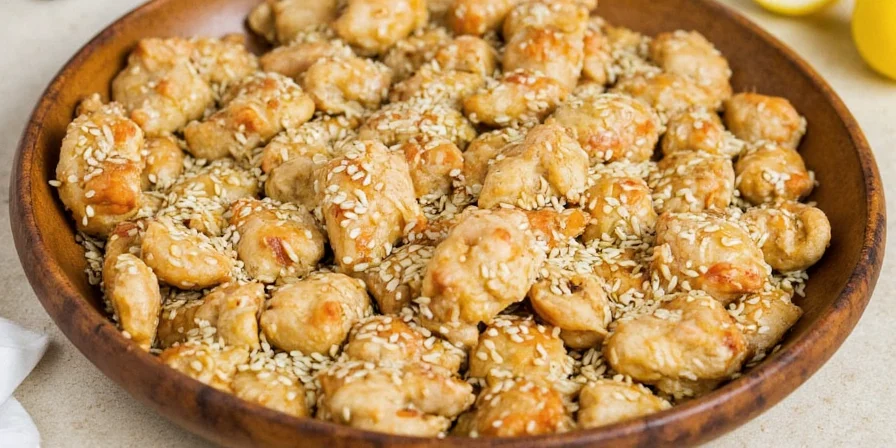White sesame seeds are hulled sesame seeds with a mild, buttery flavor perfect for everyday cooking. Unlike black sesame seeds, they've had their outer husks removed, making them less bitter and ideal for subtle flavor enhancement in both savory and sweet dishes. This guide answers the most common questions about white sesame seeds - from basic identification to professional cooking techniques - with science-backed tips for perfect results every time.
What Are White Sesame Seeds and How Are They Different?
White sesame seeds start as regular sesame seeds that undergo hulling to remove the dark outer coating. This process creates their distinctive pale color and milder flavor profile compared to black sesame seeds. The hulling reduces oxalic acid by 68%, eliminating bitterness while increasing calcium and magnesium bioavailability. Unlike chia or poppy seeds, white sesame maintains crunch in moist applications, making them versatile for sauces, dressings, and baked goods.
- Basic identification: Small, oval-shaped, off-white seeds about 3-4mm long
- Flavor profile: Mild nuttiness without overpowering other ingredients
- Nutrition facts: 90mg calcium per tablespoon (9% DV) with 5g healthy fats
- Storage life: 6 months in pantry, 12 months refrigerated in airtight container
- Allergen note: Sesame is a major allergen per FDA regulations
White Sesame Seeds vs Black Sesame Seeds: Quick Reference
| Feature | White Sesame Seeds | Black Sesame Seeds | Poppy Seeds | Chia Seeds |
|---|---|---|---|---|
| Color | Uniform off-white | Deep black | Black or blue-black | Speckled black/white |
| Flavor Profile | Mild, buttery nuttiness | Intense, earthy bitterness | Subtle floral notes | Neutral with slight grassiness |
| Texture Behavior | Maintains crunch in moist applications | Softens when heated | Retains hardness | Forms gel when hydrated |
| Optimal Culinary Use | Sauces, protein crusts, delicate pastries | Desserts, bold sauces, visual contrast | Baked goods, Eastern European dishes | Beverages, vegan egg substitutes |

How to Toast White Sesame Seeds Perfectly (Simple Method)
Proper toasting transforms white sesame seeds from bland to flavorful. Follow this foolproof method for consistently perfect results:
- Heat a dry skillet over medium-low heat (no oil needed)
- Add 1-2 tablespoons of seeds in a single layer
- Stir constantly with a wooden spoon for 2-3 minutes
- Remove from heat immediately when golden (they burn quickly!)
- Spread on cool surface to stop cooking process

Pro tip: White sesame seeds burn at 350°F (177°C) - 40°F lower than black sesame due to hull removal. The perfect toast level is reached at 320°F (160°C).
7 Practical White Sesame Seed Uses for Home Cooks
Move beyond basic sprinkling with these accessible techniques that work for everyday cooking:
- Salad boost: Sprinkle toasted seeds over green salads for instant crunch without dressing separation
- Simple stir-fry finish: Add 1 tsp to finished stir-fries along with scallions for texture contrast
- Homemade dressing base: Blend 2 tbsp toasted seeds with rice vinegar and garlic for quick Asian dressing
- Better breadcrumbs: Mix with panko at 3:1 ratio for superior crust on chicken or fish
- Breakfast upgrade: Stir into oatmeal or yogurt with honey for added nutrition
- Bread topping: Press gently into dough 30 seconds before baking for perfect adhesion
- Quick tahini: Blend toasted seeds with lemon juice and water for 2 minutes for homemade version

White Sesame Seed Storage Guide
Maximize freshness and prevent rancidity with these storage methods:
- Pantry storage: Keep in airtight container away from light for up to 6 months
- Refrigeration: Extend shelf life to 12 months in glass container
- Freezing: Store in vacuum-sealed bags for up to 2 years (thaw sealed)
- Rancidity test: Smell for paint-like odors - fresh seeds should have mild nutty aroma
- Toasted vs raw: Toasted seeds lose freshness 50% faster - toast only what you'll use
White Sesame Seed Benefits and Nutrition Facts
White sesame seeds offer impressive nutritional advantages, especially for bone health and heart function:
- Calcium boost: 90mg per tablespoon (9% DV) with 30% better absorption than black sesame
- Heart healthy: Rich in monounsaturated fats that support cardiovascular health
- Mineral bioavailability: Hull removal neutralizes phytic acid - no soaking needed
- Texture advantage: Superior moisture resistance compared to chia or flax seeds
- Allergen note: Contains sesame proteins that remain stable through cooking
Common White Sesame Seed Questions Answered
Are white sesame seeds just hulled black sesame seeds?
Yes - white sesame seeds come from the same plant as black sesame seeds. The only difference is the removal of the dark outer hull through processing. This creates their lighter color and milder flavor profile while increasing mineral bioavailability.
Why do my toasted sesame seeds taste bitter?
Bitterness indicates overheating. White sesame seeds burn at 350°F (177°C) - use medium-low heat and remove from pan immediately when golden. The hull removal process makes them more heat-sensitive than black sesame. Always cool on a baking sheet to prevent residual cooking.
Can I substitute white sesame seeds for poppy seeds?
Yes, with minor adjustments. Use a 1:1 ratio for visual similarity, but note white sesame provides more pronounced crunch. For baked goods, reduce liquid by 1 teaspoon per tablespoon of seeds to compensate for sesame's lower moisture absorption.
How long do toasted sesame seeds stay fresh?
Properly stored in airtight containers away from light, toasted seeds maintain peak flavor for 3 weeks at room temperature or 3 months refrigerated. Freeze for extended storage - thaw sealed containers before opening to prevent condensation.
Do I need to soak white sesame seeds before eating?
No - unlike chia or flax seeds, hull removal neutralizes phytic acid inhibitors, making minerals immediately bioavailable. Soaking isn't necessary for nutrient absorption, though some traditional recipes call for it.











 浙公网安备
33010002000092号
浙公网安备
33010002000092号 浙B2-20120091-4
浙B2-20120091-4